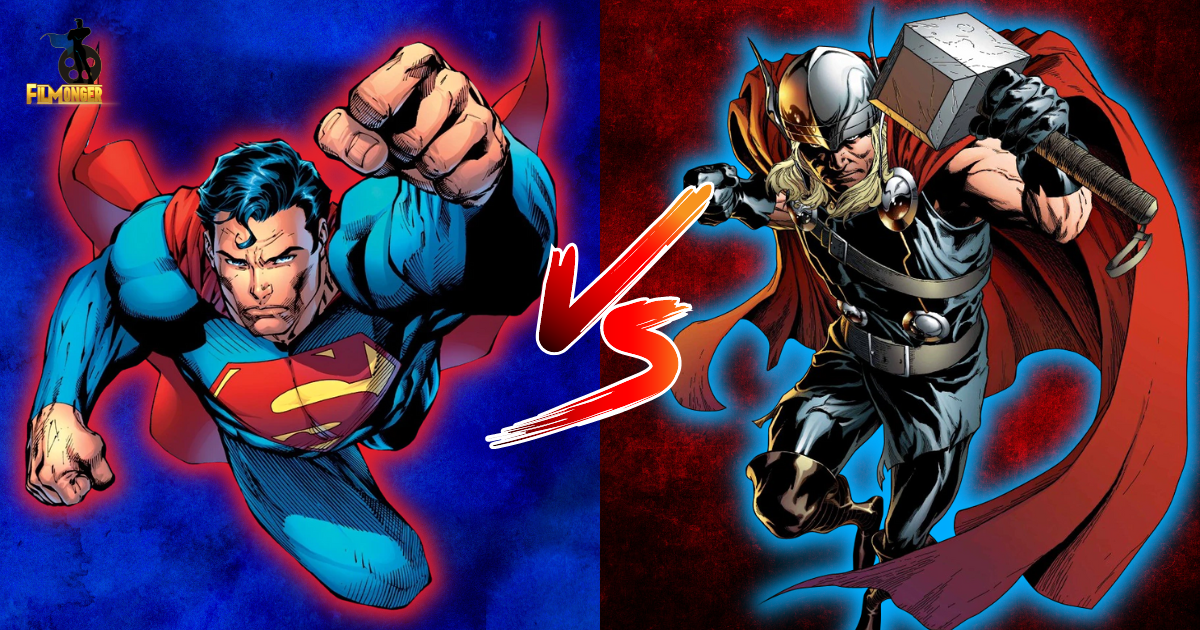The epic showdown between DC’s iconic Superman and Marvel’s formidable Thor has sparked debates that transcend the realms of comics. The question of who would emerge triumphant in a battle between these two titans has fueled the imaginations of fans and creators alike. In 2013, the revered Stan Lee eloquently stated,
The person who’d win in a fight is the person that the scriptwriter wants to win.
This notion encapsulates the influence of storytelling while highlighting the intricacies of dissecting such monumental confrontations.
Deciphering Powers and Abilities
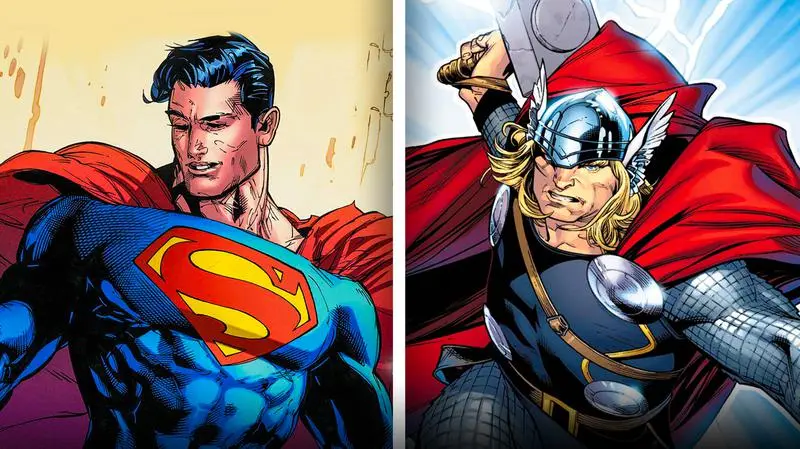
Delving into the potential outcome of this mythical duel necessitates a comprehensive analysis. This endeavor involves meticulous data curation from diverse sources, encompassing comics, encyclopedias, films, TV appearances, and official wikis. However, the complexity of these characters demands a nuanced interpretation, acknowledging that answers are seldom as straightforward as they might appear.
Examining basic statistics, we find Superman standing at six feet three inches, overshadowed by Thor’s stature of six feet six inches. Thor’s weight superiority is evident, with him weighing 640 pounds, towering over Superman’s 235 pounds. But dimensions alone hardly encapsulate the essence of this clash.
Unveiling Powers and Weaknesses
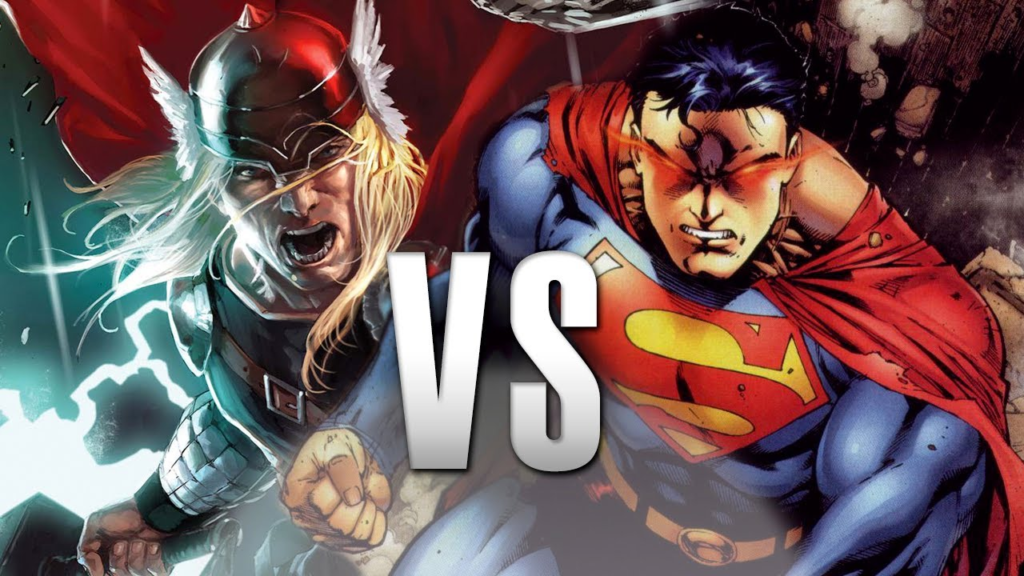
The dynamics of this battle are governed by the intricate web of powers and abilities at play. Both Superman and Thor possess enhanced strength, longevity, and accelerated healing. While Thor’s resilience against bullets is presumed, Superman’s invincibility stands out. Their distinct powers unfold as a tapestry: Superman wields super speed, freeze breath, laser vision, and X-ray perception, while Thor’s arsenal is augmented by Mjölnir, which grants him control over storms, energy blasts, and interdimensional travel. In an intriguing contrast, Superman’s powers emanate directly from his being, while Thor’s abilities are intertwined with Mjölnir’s might.
Yet, vulnerabilities punctuate their invincibility. Superman’s Achilles’ heel is Kryptonite, rendering him defenseless. For Thor, the vulnerability lies in his susceptibility to magic, ironically juxtaposed against his magical prowess due to the Odinforce. This paradox forms the crux of their tactical considerations in a confrontation.
The Enigma of the JLA/Avengers Crossover
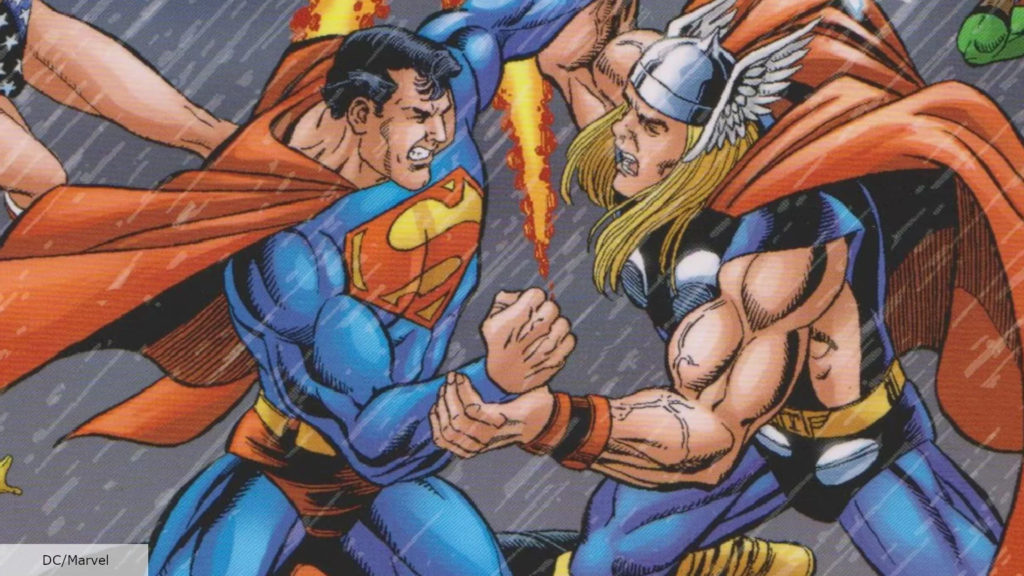
During the early 2000s, Kurt Busiek and George Pérez collaborated on the JLA/Avengers limited series, where Superman emerged victorious against Thor. However, in the midst of the battle, Superman implies that Thor might be his toughest adversary ever, though his statement gets cut off before completion.
This might seem to settle the debate, but the wisdom of Stan Lee comes into play. While the story is indeed official canon, confirmed by Busiek in 2019, it was crafted with specific circumstances and criteria to serve the narrative’s purpose at that moment.
In reality, as we’ll explore in the following section, the conditions of that confrontation differed from the standard rules that would govern a typical clash between Superman and Thor.
It’s worth noting that there have been instances where Superman has emerged victorious against Thor before, thus offering support to Team Superman’s argument.
Cracking the Mjölnir Riddle
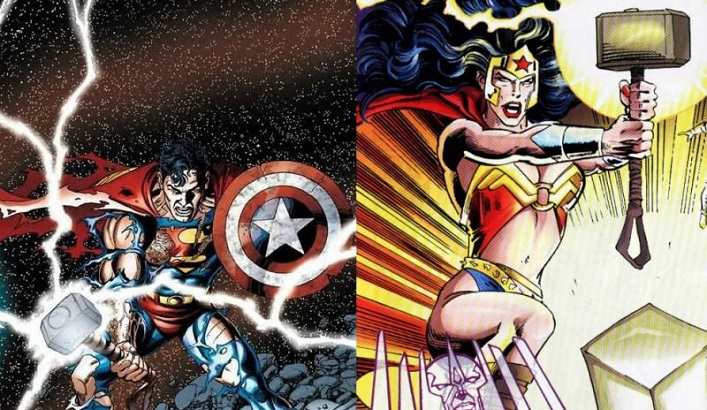
Within the pages of JLA/Avengers, an intriguing moment unfolds as Superman hoists Mjölnir, seemingly suggesting his worthiness akin to Thor. However, Superman isn’t the first DC character to achieve this feat; Wonder Woman did so in the 1990s DC vs. Marvel crossover.
While this occurrence might imply Superman’s worthiness, a closer examination reveals a different narrative. Post-battle, Superman’s attempt to lift Mjölnir proves futile. Thor clarifies, “An enchantment, courtesy of Odin, shrouds my hammer. It resists being lifted by others.”
Superman’s retort, “I held it before,” prompts Thor’s explanation, “My father is stern, Superman. But not unintelligent. Only a select few are allowed to defy the enchantment, in dire circumstances.” In essence, under desperate scenarios, some individuals may temporarily surpass the spell—a concept reminiscent of the scene in Thor: Love and Thunder involving the children.
Thor concedes, “Perhaps it was fleeting… but the hammer was in capable hands” during Superman’s grasp. Although not eternally worthy, Superman gains Thor’s acknowledgment as a suitable candidate.
Notably, the 2019 comic Thor: The Worthy features silhouettes portraying both Superman and Wonder Woman holding the hammer. Thus, it’s reasonable to assert that Thor holds the advantage with Mjölnir in this rivalry.
Proxy Heroes and their Significance
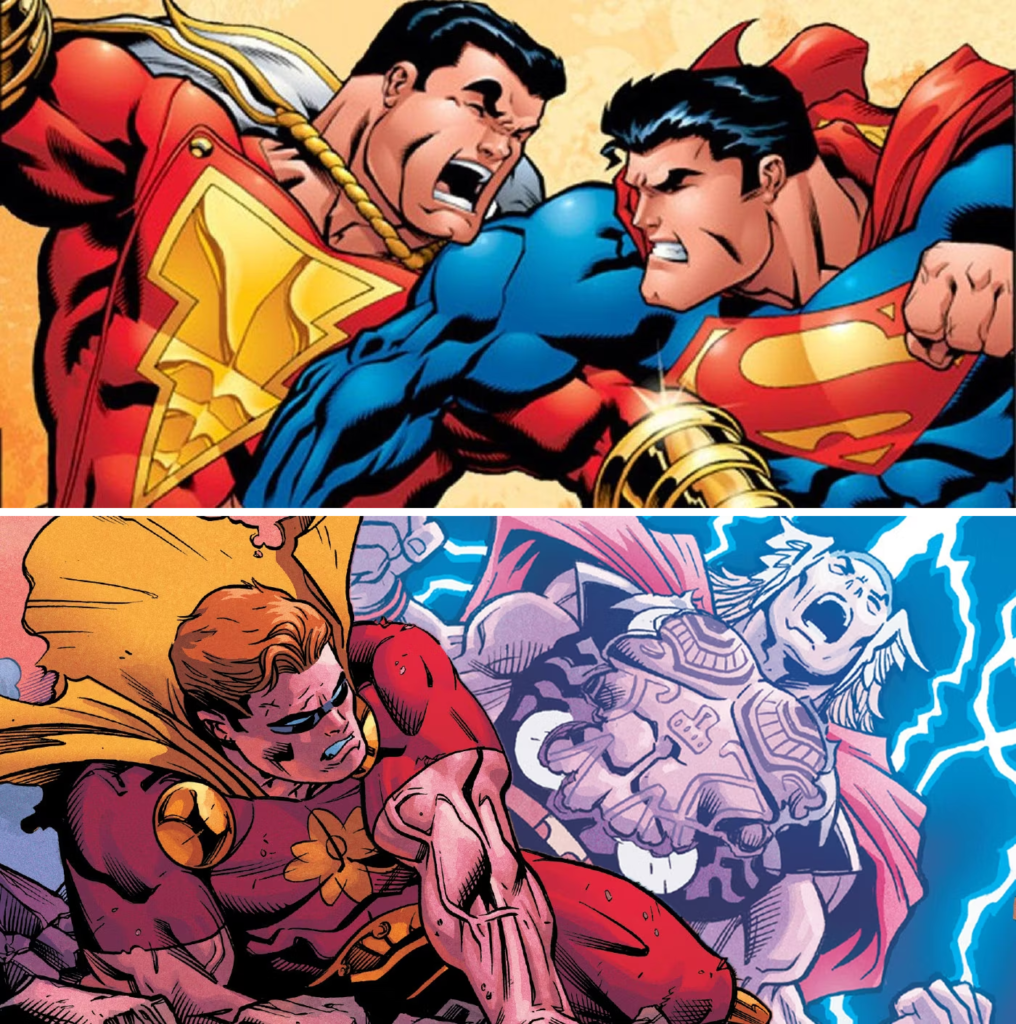
To counter the Stan Lee scriptwriter argument, it becomes crucial to explore multiple clashes between the same contenders and identify recurring patterns of victory. However, due to the distinct comic publishers of Thor and Superman, direct confrontations between them are scarce. To overcome this limitation, we delve into what we’ll term “Proxy Heroes.” This informal concept encompasses characters with akin powersets, serving as stand-ins for our debate.
Both Marvel and DC universes feature characters resembling their counterpart’s abilities—Hawkeye and Green Arrow, Quicksilver and The Flash, Daredevil and Batman, to name a few. This doesn’t imply mimicry, but rather comparability in powers and skills.
As an illustration, we examine Thor’s encounters with Hyperion—a brawny, airborne figure with super speed and energy beams. Equally, we assess Superman’s interactions with Shazam—a hero of mythic strength, magic, and lightning, able to revert to a weaker form. Notably, a divergent version of Hyperion defeated his universe’s Thor, with the Heroes Reborn event suggesting Hyperion’s technical superiority. Yet, Thor eventually triumphed over Hyperion in the same storyline. Here, the storytelling’s unique demands shaped the outcomes.
Shifting focus, Superman has bested Shazam in several instances. However, certain battles saw Superman’s victory by silencing Billy Batson to prevent his transformation. This tactic isn’t feasible against Thor, unless specific conditions align involving Donald Blake’s transformation, prolonged separation from Mjölnir, and Superman’s intervention. The dissimilarities between Shazam and Thor level the playing field, introducing nuanced dynamics to the analysis.
A Parallel Perspective
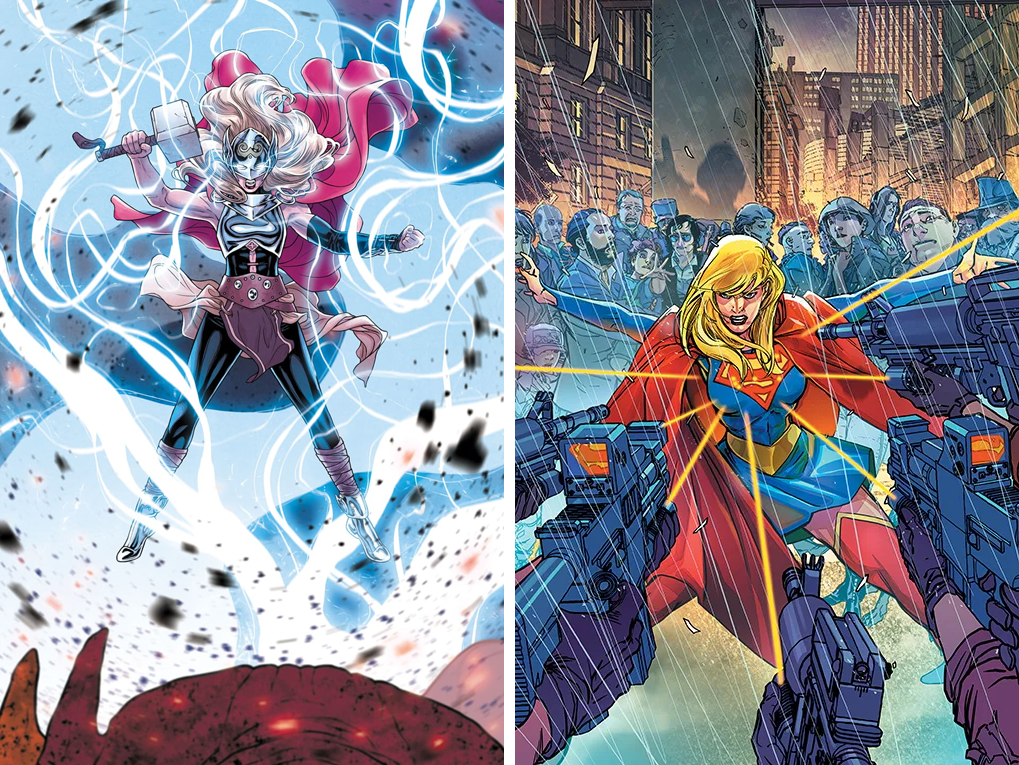
It’s crucial to clarify from the outset that Supergirl and Mighty Thor, portrayed by Kara Zor-El and Jane Foster respectively, transcend being mere “female versions” of their male counterparts, Superman and Thor Odinson. They are distinct characters in their own right.
Moreover, they don’t mirror their male counterparts entirely. Supergirl’s strength occasionally surpasses that of her cousin, influenced by the fluidity emphasized by Stan Lee’s quote—a testament to the variability that writers and artists introduce. On the other hand, Mighty Thor’s mortal form weakens each time she wields the hammer and wears the armor.
Still, it’s worth analyzing how these heroines compare. This perspective contributes context to the Superman vs. Thor debate and offers additional insights for enthusiasts grappling with the Asgardian-Kryptonian dilemma.
Physically, Kara stands at five feet and five inches, while empowered Jane reaches five feet and nine inches. Notably, Kara weighs 120 pounds, in contrast to Jane’s 450 pounds when empowered, as per the Marvel Wiki. Similar to their male counterparts, the Asgardian heroine triumphs in these physical attributes.
A significant deviation lies in their respective power origins. Kara acquired her abilities during adolescence upon arriving on Earth. Conversely, Jane embraced Mjölnir’s power as an adult. This sets Kara’s advantage in experience apart from Jane’s initiation into power.
Curiously, Kara and Thor Odinson share a commonality in growing up on foreign worlds that endowed them with powers. This contrasts with Clark and Jane, who navigated their abilities through learning. This stands as a distinctive similarity amidst the counterparts.
Undoubtedly, a comprehensive comparison between Supergirl and Mighty Thor warrants a separate exploration. Nonetheless, these insights enrich the context for the Thor vs. Superman discourse.
Unearthing the Verdict
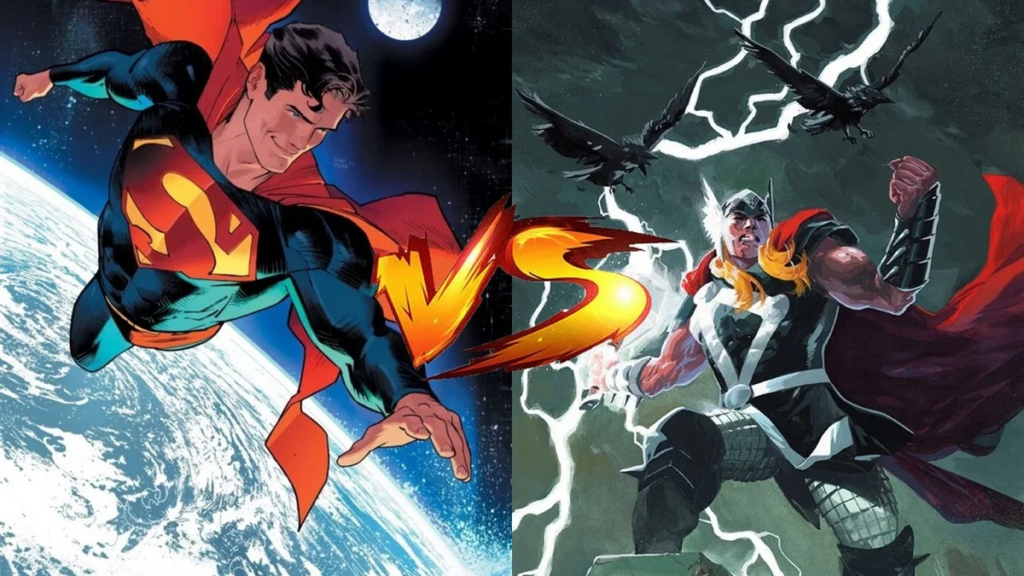
The quintessential question lingers: who would triumph in this colossal contest? A nuanced interpretation leans slightly in favor of Superman, attributed to his array of powers deeply rooted within him. The balance of strengths appears to sway in his direction, with Mjölnir’s might being one of Thor’s few aces. However, the variability of storytelling contexts underscores the malleable nature of these assessments.
A Never-Ending Dialogue
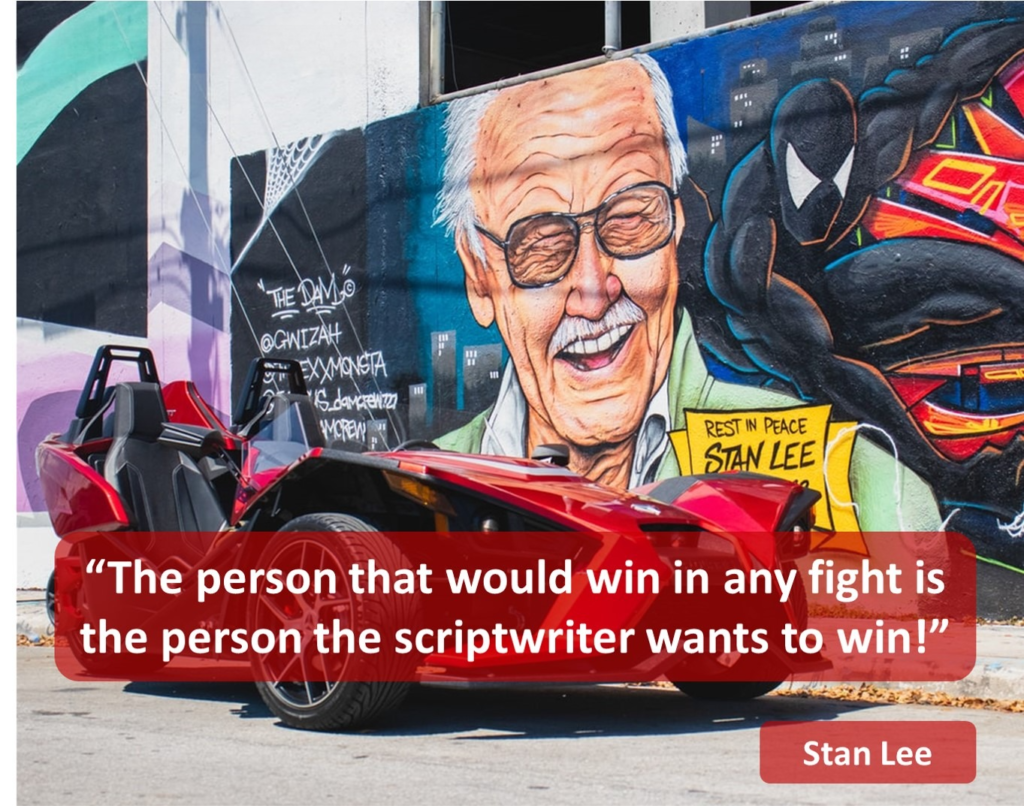
The debate surrounding Superman vs. Thor encapsulates the multi-dimensional nature of superhero analyses. Beyond data and statistics, these narratives are sculpted by the art of storytelling. Stan Lee’s wisdom serves as a compass, reminding us that heroes’ destinies are often steered by the creative minds behind them. As the tapestry of comics continues to weave new chapters, this debate stands as an eternal testament to the limitless imagination of fans and creators alike.
